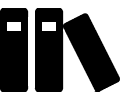

As I’ve gone around the country speaking and advising, I keep hearing
people telling me they are becoming burned out; there is too much
nowadays in the health care industry to pay attention to. I have come
to believe that as pharma, eHR, and non-surgical and surgical
technology, has developed, it has become more complex.
For perspective, as recent as the early 1980’s’s, there were only
five major antibiotics available to prescribe (can you name them?). We
had at our disposal only a couple of ways to look inside the body
without a knife and only one way to treat hypertension (HCTZ and
Lasix). Think about those numbers in comparison to our health care
system today. We are on our fifth or sixth generation of antibiotics;
you can peer inside the body more ways without a knife than with one and
I don’t know the latest count on the number of medications to treat
hypertension and heart disease, much less the array of treatments for a
host of other diseases that actually had no long term treatment thirty
years ago.
That cumulative effect can be overwhelming and in medicine we’re not
very good at letting go of one activity or practice or diagnostic test
in favor of another. A patient prescribed imaging, for example, will
often end up with a CAT scan, a MRI AND Xray. On top of that, someone
may also throw a scope down your throat or up your bum, just to be sure.
Granted, that some of that is driven by an economic model but each of
those modalities need to be managed. In addition, there are a whole
host of activities that could be ceased because they add no additional
value to the outcome. Allow me to illustrate by asking…when was the
last time you evaluated all of your paper forms with the question “are
they still necessary?” Similarly, when was the last time you evaluated
processes to confirm they were still effective and efficient? And, as
important, when was the last time you evaluated your physical space and
considered the cost of known roadblocks in comparison to the cost of a
remodel or relocation.
In short, what are the behaviors in your practice that are anchors around everyone’s neck?
There are only so many hours in a day. At some point you must let go
of something in order to start something new. I have a rule that a new
pair of shoes to my wardrobe requires that I jettison an old pair. The
same thing holds true in your medical practice.
Enter the “Stop It” button.
This is an objective way to challenge you and your providers to think
about your work, every day. Are staff doing work that is actually
someone else’s work? Are they not getting work done? Are errors being
made? Those are all cues that you need to look for your practice’s
“Stop It” button.
I recently had an experience with a practice exploring the things
they could stop. One physician told me she spent 45 minutes a day being
interrupted by pharmaceutical reps. After we, around the table, yelled
“Stop It” and had a good laugh, we discussed how the practice
could change their policy on these visits. And, last I checked, she
gained about four additional hours a week. Those reps still stop by the
practice, but they work with someone who can manage that time more
effectively, so the physician can do more appropriate tasks, like seeing
patients.
It’s those types of “little” things that are considered everyday
activities that can be stopped or given to someone else appropriately
trained and skilled.
So, what are you going to stop, today?



Sign in/up with Facebook
Sign in/up with Twitter
Sign in/up with Linkedin
Sign in/up with Google
Sign in/up with Apple


Wouldn't it be a good idea to create a course?
